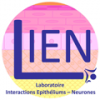Basic medical research
Laboratory of Biopolymer Structure
Understanding mechanisms of action of small proteins and peptides in biological systems. As a part of a large international (Poland, South Korea, USA, Argentina, France, Sweden) informal research group we participate in a project to develop what is called a coarse-grained (simplified) model of polypeptide chain called UNRES (UNited RESidues). (www.unres.pl)
Search and study of short peptide sequences having a defined spatial structure and showing the ability to catalyze chemical reactions.
Laboratory of Mass Spectrometry
The Mass Spectrometry Laboratory has been appointed at the Intercollegiate Faculty of Biotechnology of UG-MUG within the framework of the Mobi4Health project (full title of the project: CENTER OF MOLECULAR BIOTECHNOLOGY FOR HEALTHY LIFE: Biotech solutions bringing health to living organisms and environment supported by mass spec-focused research platform).
Laboratory of Biophysics
The main objectives of our research are to describe the mechanisms of action of a wide variety of toxic substances, to search for protective compounds and to reveal their mechanisms of action, to develop new effective methods to modulate the activity of drugs with particular emphasis on drugs used in anticancer therapy and antibiotics.
Medicinal Chemistry Laboratory
Human Cystatin C - conformational studies using NMR techniques and molecular dynamics
Study of the interaction of human cystine C with antibodies as potential amyloidosis inhibitors
Peptide antibiotics and peptidomimetics - design, synthesis, conformational studies
Peptides with pro-regenerative and neuroprotective properties - design, synthesis and physicochemical research
Design, synthesis and research of peptides with potential anti-cancer properties
Peptides and peptidomimetics in viral diseases
Department of Biomedical Chemistry_EJ
Our research group focuses on diseases related to the aggregation of polypeptides and proteins. We study the aggregation process itself using fluorescence and electrophoretic methods, size-exclusion chromatography, and LC-MS coupled with enzymatic digestion. We are also deeply involved in the search for aggregation inhibitors as well as in studying the role that the 20S proteasome, stimulated by the activators we design, may play in removing toxic soluble oligomers.
Experimental and Translational Immunology Group (DGOLab)
We aim to understand mechanisms of cell communication in the skin and other body barriers. We focus our attention on exosomes, a nanoscale vesicles secreted by epithelial cells and are interested in the message which these convey to the immune system. We hope that our research will lead to better therapeutic approaches for patients.
.
Scientific interests:
-
communication between cells during immune responses
LIEN Laboratoire Interactions Epitheliums Neurones
The work of EA4685 concerns the control of the nervous system over the physiology of organs, mainly sensory organs, neuronal plasticity and the interactions of cells of the nervous system (neurons and glial cells) with other cells. These aspects are addressed by biology, biotechnology, physiology and pathophysiology.
Most of our work concerns the relationships between the skin and the nervous system for the understanding of pruritus.
CTS1079: Bariatric Surgery and Diebetes mellitus: Hepatic and pacreatic implications
-Experimental animal models of bariatric surgery
-Mechanisms of resolution of T2DM after surgical techniques in humans.
-Enterohormones and their impact on the homeostatic mechanisms of glycemic control.
-Hepatic damage linked to obesity. Involvement in the resolution of T2DM. Nonalcoholic fatty liver damage.
Pagination
- Previous page
- Page 2
- Next page



